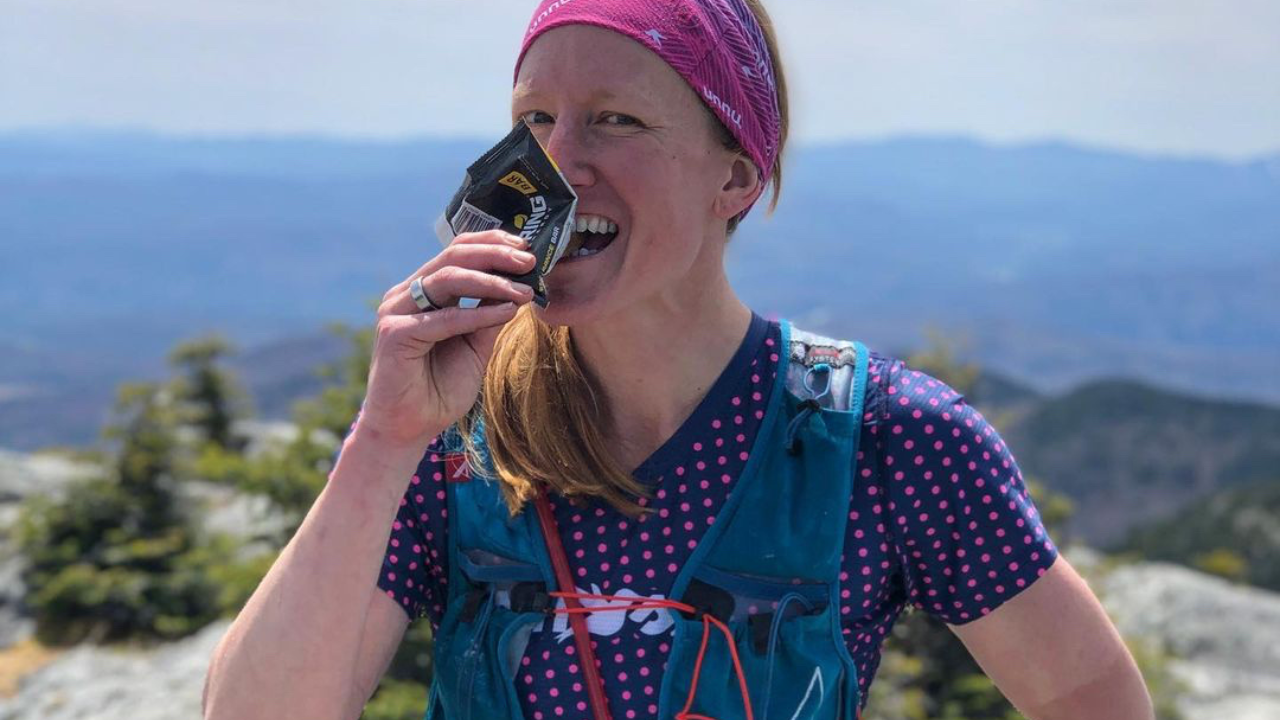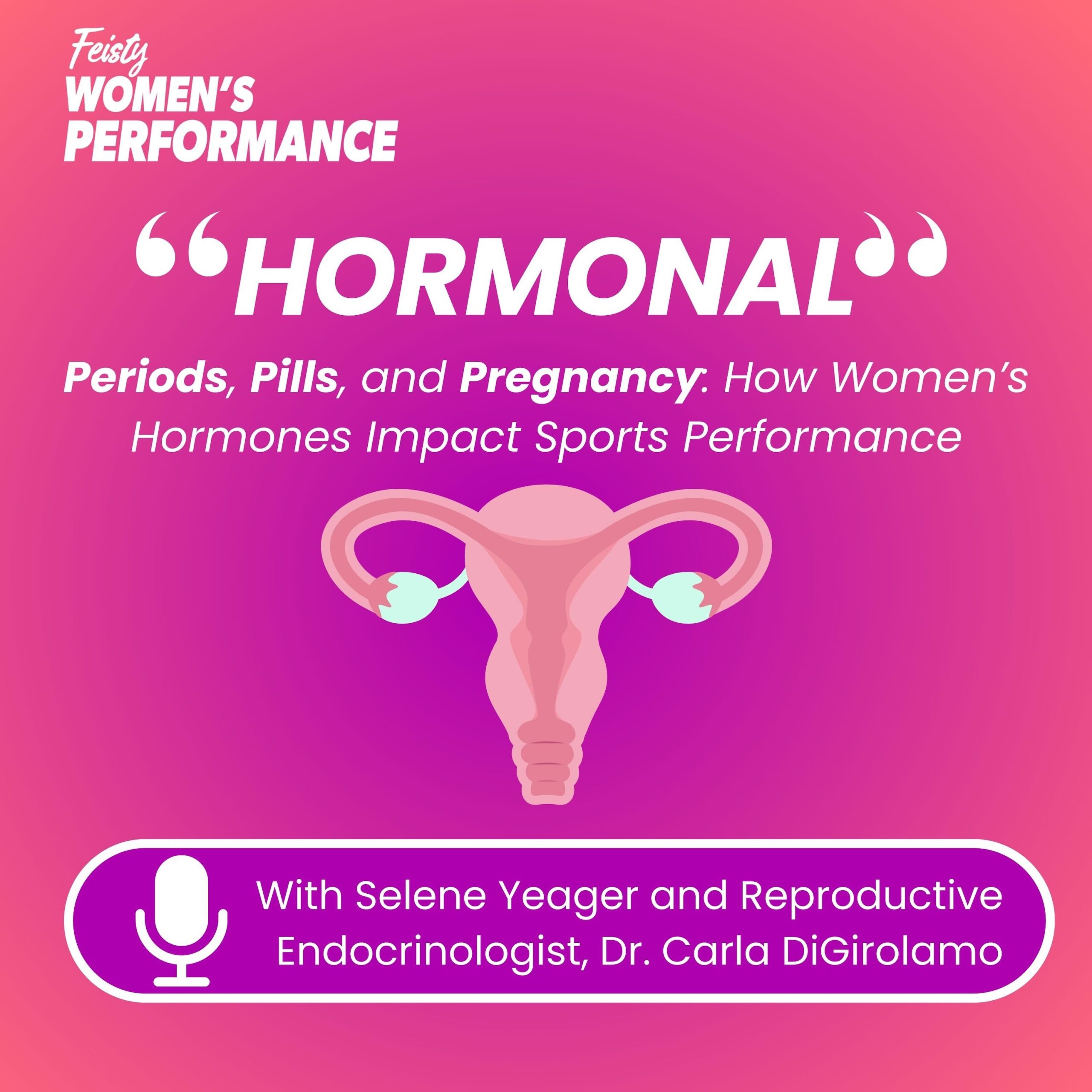June 10, 2022
Top Race Day Nutrition Tips for Women in Triathlon

Level-up your performance by creating race-day nutrition strategies that work with the unique demands of being a woman in triathlon.
Race season has officially begun in the northern hemisphere. As wetsuits are inspected for tears and tri suits dug out of bottom drawers, we hear familiar echoes of “where the actual f*@k is my race belt?” As a longtime coach, athlete, and mentor, I am here to give you four weeks of practical race information.
Text by Miranda Bush, Feisty Triathlon Head Coach & Educator
It is no secret that perfecting a race-day nutrition plan is filled with trial and error. And often as soon as you can claim “nailed it!,” your body changes, new research emerges, or marketers lure you in with the promise of products that will give you better results.
That means performing plenty of test runs and keeping notes, so you can understand what works best for you in different distances, temperatures, “times of the month,” and so on. It’s worth noting that nutrition science is ever evolving, not all experts agree, and again, your own needs can change depending on circumstances. So it’s impossible for me to give you exact recommendations, but I can offer the best “do’s” and “don’ts” to get you started.
Consider women-specific nutrition guidelines: Most athletic research has been, and is done, on men. Thankfully, women’s exercise physiology researchers like Dr. Stacy Sims have dedicated their efforts to creating race-day nutrition guidelines based on the specific physiological needs of women. Dr. Sims suggests starting with 40-50 grams of carbohydrates per hour for women, ideally from real food rather than engineered sports products. She also suggests avoiding fructose, as it is not rapidly absorbed by the GI tract. And don’t be afraid to experiment with adding some protein to your fuel, up to 7-10 grams per hour, according to Sims.
Race-day fueling needs can also change throughout your monthly cycle; be impacted by hormonal birth control, and shift throughout different stages of life. For example, pre-menopausal, “naturally cycling” women (those who have a menstrual cycle that is not impacted by hormonal birth control), will likely benefit from trending toward the higher suggested end of carb and protein intake (40 grams of carbs and 10-15 grams of protein) during the luteal, or high hormone phase of their cycle (often referred to as PMS). And peri and post-menopausal women often have an even harder time metabolizing fructose, so that should be taken fully into account for race-day fueling plans.
(Check out Sims’ books, “Roar” and “Next Level,” written with Selene Yeager for more cycle specific fueling tips and helpful recipes!)
Practice different fueling strategies–for every distance.
Practice many different fueling options and combinations in training, tracking how each reacts in your body. Athletes often think race day nutrition only applies to longer distances, but you can absolutely see benefits from taking in calories during a sprint. Try different foods and drink mixes during your swim, bike, run, brick workouts and races, so you can see how your nutrition works across sports and transitions. Find out what fuel will be offeredon course and buy it and try it, just in case you need it as a fall-back plan (who knows, you might like it enough to use it as your primary source!). There’s no one set answer for how many carbs women “should” take in and use during training, but studies have shown that we can train our guts to best utilize our fuel with time and practice. A higher heart rate combined with jostling during running will likely exacerbate GI issues, so make sure you get in more calories while on the bike. And also keep in mind that your nerves will likely impact your digestion on race day, so familiar products will go in, stay down, and be better absorbed.
New athletes may feel less than confident with bike handling skills, and opening packages or even grabbing water bottles can be intimidating. If this applies to you, practice these skills (especially drinking) on soft surfaces. If possible, invest in an aero water bottle for easier accessibility. Open your fuel packages ahead of time whenever possible. And if needed, include nutrition and hydration stops in your race nutrition plan!
Do trust your gut. You’ve heard a million times to try, “nothing new on race day,” especially in regards to nutrition. And in a perfect world, our plans all work according to plan. But as you know, things often don’t go perfectly and gastrointestinal issues (GI) can happen despite the best of plans. Trust your intuition and don’t be afraid to make some nutrition pivots on race day. Start with small bites or sips and check-in to see how items hit your gut. For example, if Plan A isn’t working and your gut-feeling is telling you that Red Bull will “give you wings,” then start with a few sips and see if you fly.
When possible, hire a nutrition pro. Coaches are great resources to get you started and to help make tweaks in your race nutrition plan. But, we are still not replacements for registered dietitians and accredited nutritionists. If financially possible, Interview and hire professionals who have experience and training in working with women specifically, ideally in your life stage.
Don’t train or race fasted. Women should always eat before workouts! According to Dr. Sims, “from a health standpoint, intermittent fasting is useful. This is particularly true for the general population who are not very active and struggling with metabolic diseases…if you’re a woman who is adding athletics on top of intermittent fasting, it can be harmful to both your performance and your health.” According to Sims, when we layer exercise stress on top of the stress created by neglecting to fuel our bodies, stress hormones like cortisol rise even higher. As you keep increasing that stress, it keeps your sympathetic drive high and reduces your ability to relax. Your thyroid activity is depressed, which messes with your menstrual cycle. Your body also starts storing more belly fat.
Experiment with different pre-race meals and timing in training. You want your pre-workout snack to provide energy, help maximize the adaptations from the session, and make you feel good physically and mentally. If it has been more than two hours since you last ate, Dr. Sims recommends starting with a balanced snack that contains about 1.3 calories per pound of body weight, 30-45 minutes before exercise. Try a low-fat snack with some carbs, but especially focus on getting 15 to 20 grams of protein. Give your options some time to see if they work, and if these recommendations don’t feel good in your body, then play with the specific amounts and timing. Just make sure you do eat!
Don’t ignore the osmolality of your products. Osmolality relates to how quickly a fluid will clear the stomach. Many sports drinks and gels are composed of fructose, glucose, and/or maltodextrin, all of which have fairly high osmolality, and are especially hard for women to digest, as mentioned above. Sports solutions that have lower osmolality will clear the stomach quickly, thereby mitigating or even eliminating sloshing, stomach aches, and bloating. When I started in triathlon it was common practice to make highly concentrated nutrition bottles – sometimes reaching over 1,000 calories per bottle. Going against the manufacturers’ recommendations and not mixing with water increases the osmolality and makes the solution hard to digest. If you still do this, I suggest you stop, unless you plan to fully hydrate with each sip.
Commit to a plan. Take what you learned in training, and write down a detailed race nutrition plan specifically tailored to each distance. And don’t expect your race-addled brain to remember it. Write your plan on your arm with a permanent marker, tape it to your bike, or set alarms on your watch. And follow the plan! As a coach, one of the more frequent mistakes that my athletes make regarding nutrition is forgoing the plan early on during a race because they “were feeling so good.” If you trained properly you should feel the appropriate kind of “good” to start a race, and fueling will likely help you continue to not only feel “good,” but operate at your best.
While this is not an article on race day hydration, I do have to mention that hydration is key in performing well, and it must be combined with proper fueling in order to absorb liquids and nutrients properly. Practice your race day fueling and hydration, and stay tuned for more information on hydration specifics in the future!
Miranda Bush is the Head Coach and Educator at Feisty Triathlon. She is USA Triathlon and Training Peaks certified, as well as a certified Health Coach. She is also a graduate of Dr. Stacy Sim’s Women Are Not Small Men and Menopause for Athletes courses. As a longtime coach specializing in training women, her passion lies in using lessons from training and racing to teach athletes to evolve physically, mentally, and emotionally through sport. Miranda is also a longtime athlete and multiple Ironman and 70.3 distance podium finisher, maintaining a consistent racing career while working and raising her kids. She resides in Wisconsin with her three teenagers and husband who all love to race triathlon.


 Outspoken Women in Triathlon Summit Returns Bigger than Ever
Outspoken Women in Triathlon Summit Returns Bigger than Ever  Driving the Lamborghini: Productivity and the Power of Paper
Driving the Lamborghini: Productivity and the Power of Paper  5 take aways from the Compete Sports Diversity Summit
5 take aways from the Compete Sports Diversity Summit  Simple Tips to Hone Your Bike Handling Skills
Simple Tips to Hone Your Bike Handling Skills 


